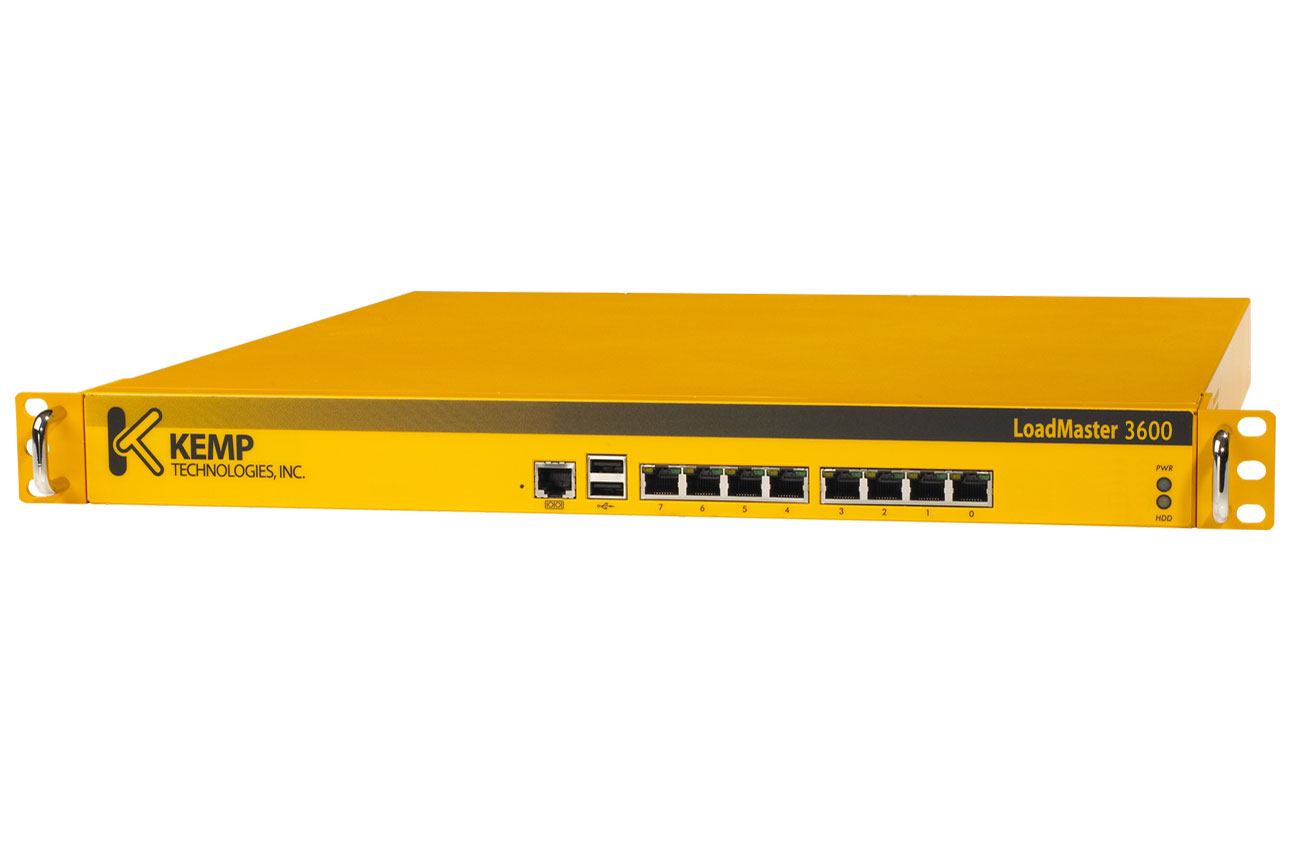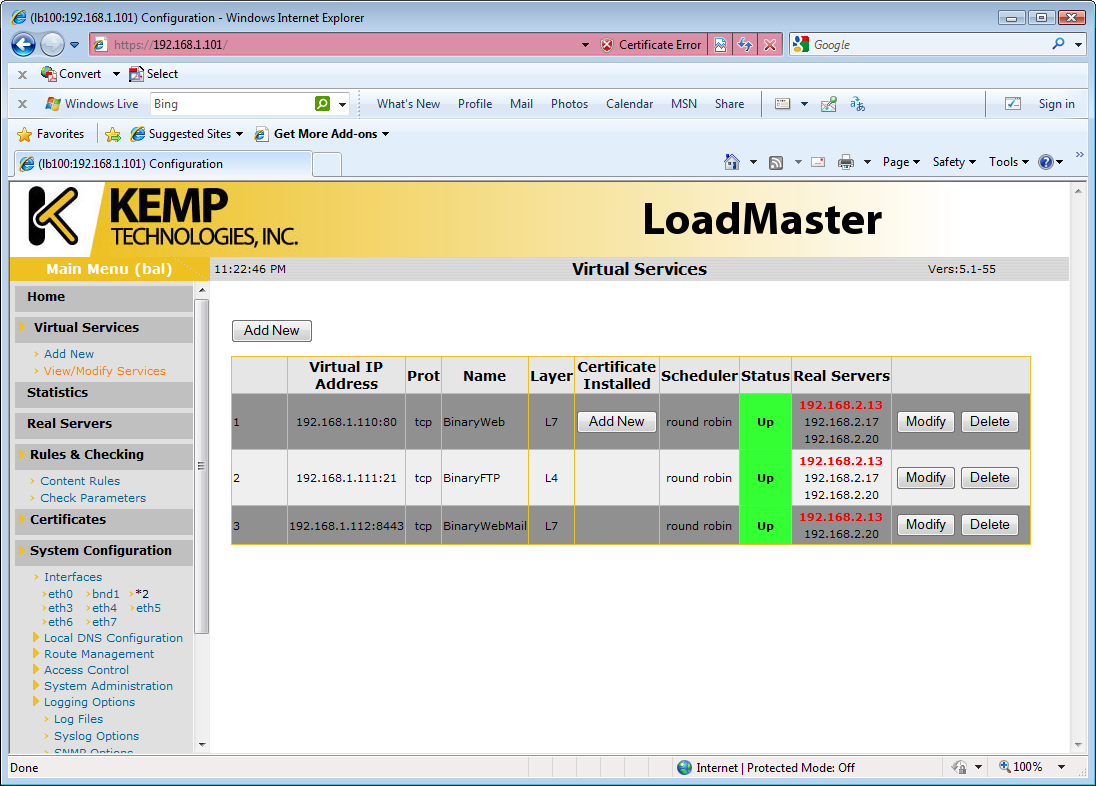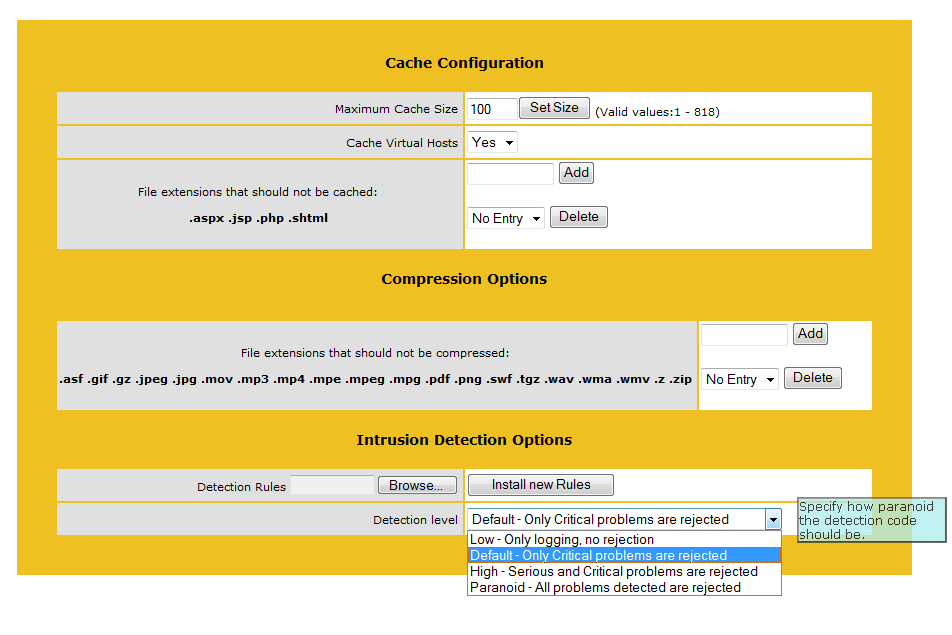Kemp Technologies LoadMaster 3600 review
Kemp LoadMasters are affordable application delivery controllers for SMBs. Dave Mitchell takes an exclusive look at the new 3600 server load balancing appliance and sees whether its features are as good as its price.
The LoadMaster 3600 beats most of the competition at the value end of the server load balancing market as it offers an excellent range of features. A traffic throughput of 3.4Gbit/s and 5,000 TPS SSL acceleration rates are also exceptionally good at this price point. Our only gripe is the need for Kemp to address the use of VMs as physical servers and bring in some load balancing features specifically for these environments.


The Kemp LoadMaster 3600

The LoadMaster has seven load balancing schemes ranging from round robin to the new weighted response time feature.

Kemp provides a good range of L4 and L7 persistence controls to ensure users are handled by the same real server during their

Virtual servers comprise multiple real servers and you can see at a glance what their status is.

Real-time statistics for both real and virtual servers can be viewed from the web console.

The 3600 can cache and compress web content and uses SNORT rules to provide intrusion prevention measures.
The majority of application delivery controllers (DLCs), or server load balancers, are priced way beyond the means of SMBs but Kemp Technologies is one of a growing number of vendors that aim to make this technology far more affordable. In this exclusive review we look at its latest LoadMaster 3600 which represents the higher end of a family of four general purpose appliances and with a price tag of 7,250, looks particularly good value.

The 3600 provides server load balancing, Layer 4/7 content switching, SSL acceleration for up to 5,000 transactions per second (TPS) and supports 1,000 physical and 1,000 virtual servers out of the box. It supports a number of deployment methods where a single-arm mode uses one network port with all physical and virtual servers on the same network subnet.
We opted for the two-arm mode which keeps physical and virtual servers separated on different subnets. The appliance has eight Gigabit Ethernet ports and for high availability you can use two appliances for failover purposes.
Initial installation is simple as you have three methods of access. The CLI (command line interface) can be accessed with a serial port connection, you can plug in a local monitor and keyboard or simply point a browser at the appliance's default IP address.
The 3600 adheres to the standard concepts for server load balancing as you create farms using multiple physical servers and assign these to virtual servers. For testing we used a VMware ESX Server 4 system to present multiple real' servers running web, FTP and mail services. Creating virtual servers was simple as we provided an IP address, port number and protocol and then assigned physical servers to them using their real IP addresses.
Kemp has seven load balancing schemes with the default round robin mode intercepting incoming requests and distributing them to each server in strict rotation. Weighted round robin mode allows priorities to be assigned to each server in the farm thus ensuring the better specified servers are kept the busiest.
Get the ITPro daily newsletter
Sign up today and you will receive a free copy of our Future Focus 2025 report - the leading guidance on AI, cybersecurity and other IT challenges as per 700+ senior executives
Dave is an IT consultant and freelance journalist specialising in hands-on reviews of computer networking products covering all market sectors from small businesses to enterprises. Founder of Binary Testing Ltd – the UK’s premier independent network testing laboratory - Dave has over 45 years of experience in the IT industry.
Dave has produced many thousands of in-depth business networking product reviews from his lab which have been reproduced globally. Writing for ITPro and its sister title, PC Pro, he covers all areas of business IT infrastructure, including servers, storage, network security, data protection, cloud, infrastructure and services.
-
 Stansted IT glitch causes thousands to miss their flights
Stansted IT glitch causes thousands to miss their flightsNews Eight hour outage causes chaos at UK’s fourth busiest airport
By Jane McCallion Published
-
 FBI takes down botnet exploiting aging routers
FBI takes down botnet exploiting aging routersNews Organizations warned they should replace potentially affected devices
By Emma Woollacott Published
-
 LockBit ransomware group falls victim to hackers itself
LockBit ransomware group falls victim to hackers itselfNews A data leak has revealed negotiations with victims, along with Bitcoin wallet addresses, affiliate accounts and details of attacks
By Emma Woollacott Published